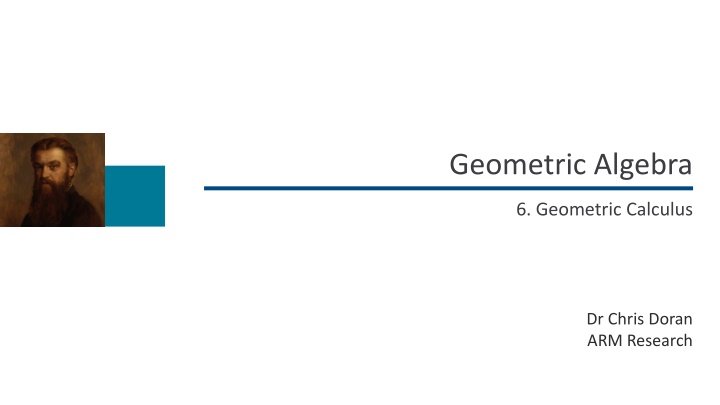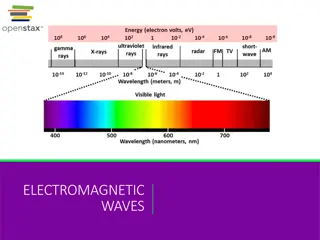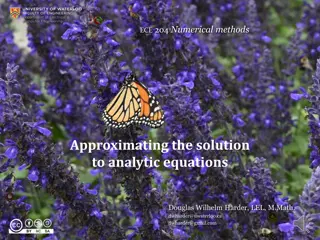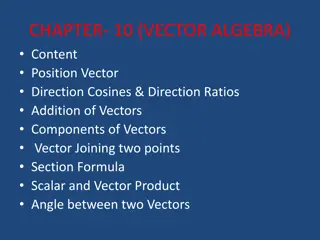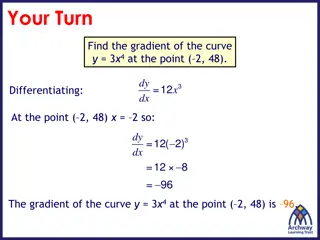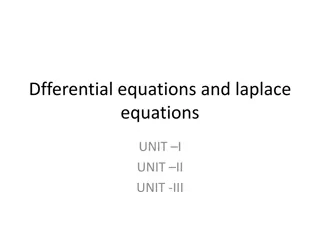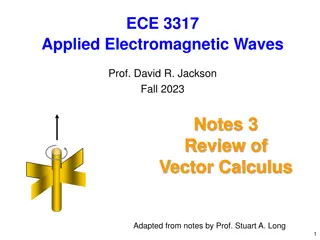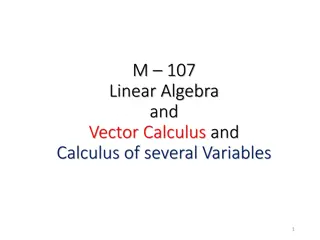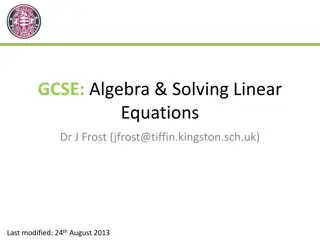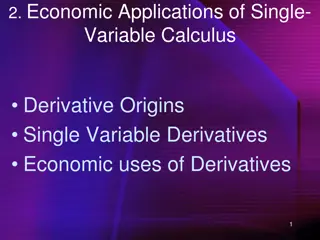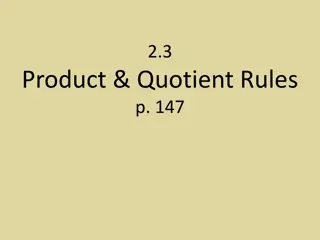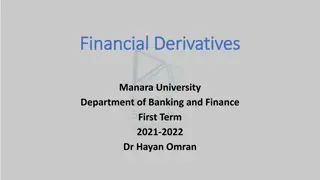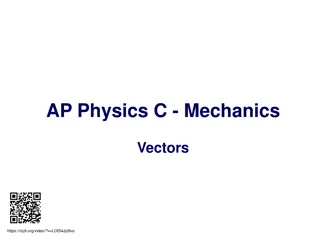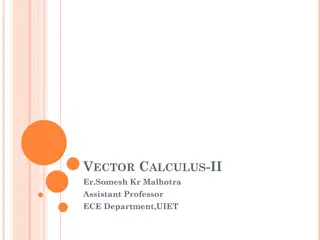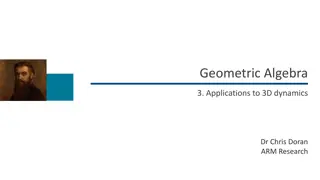Geometric Algebra and Calculus: A Deep Dive into Vector Derivatives and Maxwell Equations
Explore the world of geometric algebra and calculus through topics such as vector derivatives, Cauchy-Riemann equations, Maxwell equations, and spacetime physics. Unify diverse mathematical concepts to gain insights into analytic functions, differential operators, and directed integration.
Download Presentation

Please find below an Image/Link to download the presentation.
The content on the website is provided AS IS for your information and personal use only. It may not be sold, licensed, or shared on other websites without obtaining consent from the author.If you encounter any issues during the download, it is possible that the publisher has removed the file from their server.
You are allowed to download the files provided on this website for personal or commercial use, subject to the condition that they are used lawfully. All files are the property of their respective owners.
The content on the website is provided AS IS for your information and personal use only. It may not be sold, licensed, or shared on other websites without obtaining consent from the author.
E N D
Presentation Transcript
Geometric Algebra 6. Geometric Calculus Dr Chris Doran ARM Research
L6 S2 The vector derivative Define a vector operator that returns the derivative in any given direction by Define a set of Euclidean coordinates This operator has the algebraic properties of a vector in a geometric algebra, combined with the properties of a differential operator.
L6 S3 Basic Results Extend the definition of the dot and wedge product The exterior derivative defined by the wedge product is the d operator of differential forms The exterior derivative applied twice gives zero Leibniz rule Where Overdot notation very useful in practice Same for inner derivative
L6 S4 Two dimensions Now suppose we define a complex function These are precisely the terms that vanish for an analytic function the Cauchy-Riemann equations
Unification The Cauchy-Riemann equations arise naturally from the vector derivative in two dimensions.
L6 S6 Analytic functions Any function that can be that can be written as a function of z is analytic: The CR equations are the same as saying a function is independent of z*. In 2D this guarantees we are left with a function of z only Generates of solution of the more general equation
L6 S7 Three dimensions Maxwell equations in vacuum around sources and currents, in natural units Remove the curl term via Find All 4 of Maxwell s equations in 1!
L6 S8 Spacetime The key differential operator in spacetime physics Form the relative split Recall Faraday bivector Or So So finally
Unification The most compact formulation of the Maxwell equations. Unifies all four equations in one. More than some symbolic trickery. The vector derivative is an invertible operator.
L6 S10 Directed integration Start with a simple line integral along a curve Key concept here is the vector- valued measure More general form of line integral is
L6 S11 Surface integrals Now consider a 2D surface embedded in a larger space Directed surface element This extends naturally to higher dimensional surfaces The surface element is a blade It enters integrals via the geometric product
L6 S12 Fundamental theorem Overdots show where the vector derivative acts Left-sided version Right-sided version L is a multilinear function General result
L6 S13 Divergence theorem L is a scalar-valued linear function of A Set Vector Grade n-1 Constant Grade n Scalar measure The divergence theorem
L6 S14 Cauchy integral formula One of the most famous results in 19th century mathematics We want to understand this in terms of Geometric Algebra Knowledge of an analytic function around a curve is enough to learn the value of the function at each interior point And extend it to arbitrary dimensions!
L6 S15 Cauchy integral formula Translate the various terms into their GA equivalents Find the dependence on the real axis drops out of the integrand
L6 S16 Cauchy integral formula Applying the fundamental theorem of geometric calculus Scalar measure Function is analytic The Green s function for the vector derivative in the plane
L6 S17 Cauchy integral formula 1. 2. dz encodes the tangent vector Complex numbers give a geometric product The integrand includes the Green s function in 2D The I comes from the directed volume element 3. 4.
L6 S18 Generalisation This extends Cauchy s integral formula to arbitrary dimensions
L6 S19 Unification The Cauchy integral formula, the divergence theorem, Stoke s theorem, Green s theorem etc. are all special cases of the fundamental theorem of geometric calculus
L6 S20 Resources geometry.mrao.cam.ac.uk chris.doran@arm.com cjld1@cam.ac.uk @chrisjldoran #geometricalgebra github.com/ga
